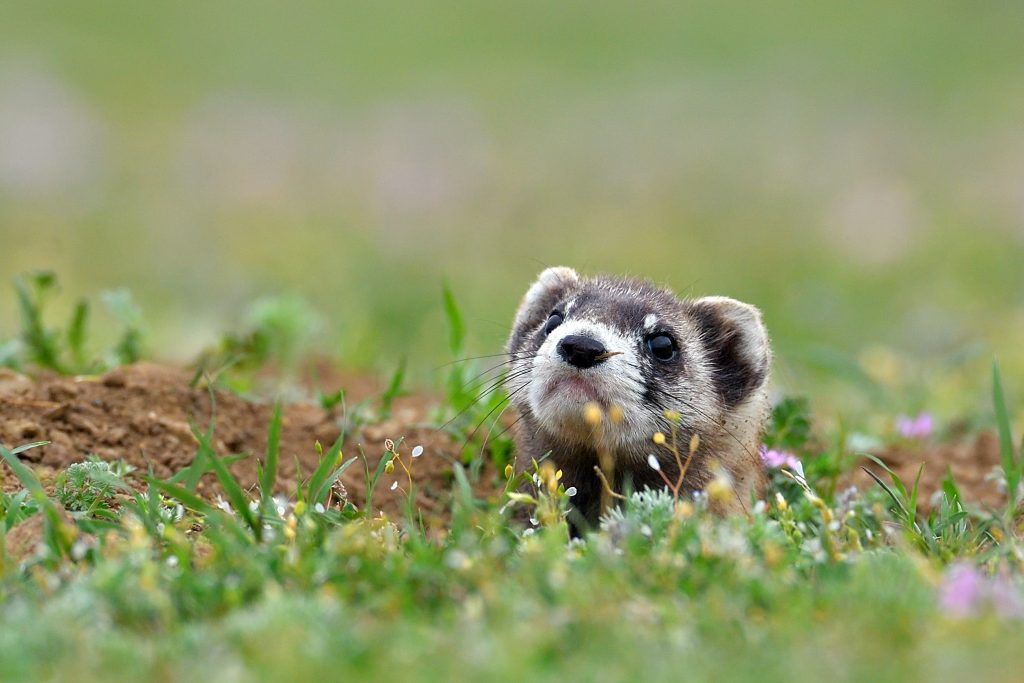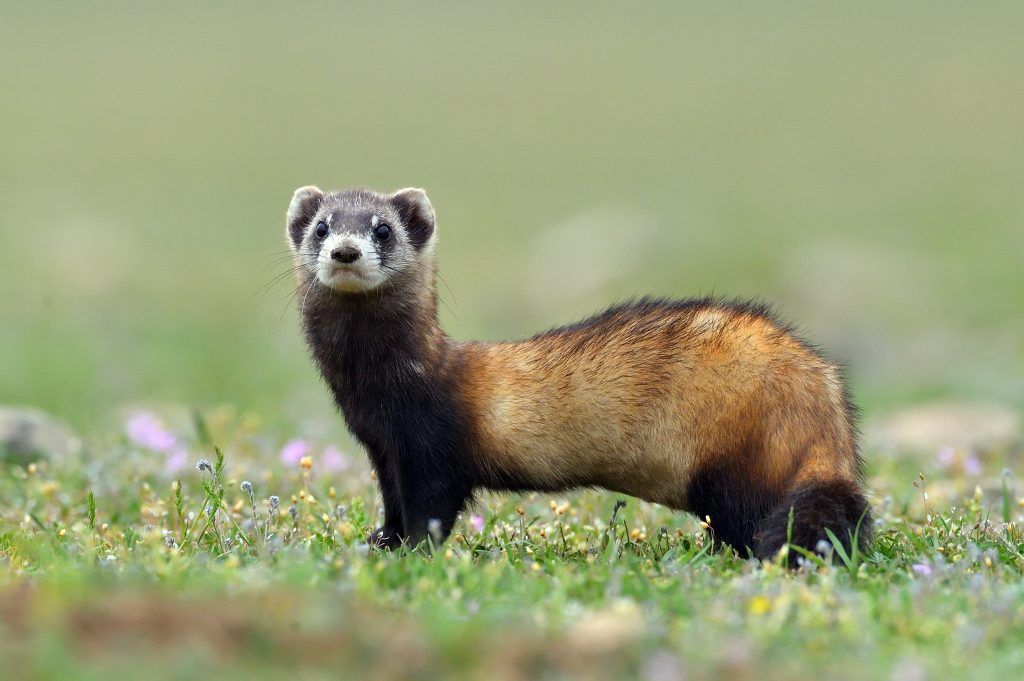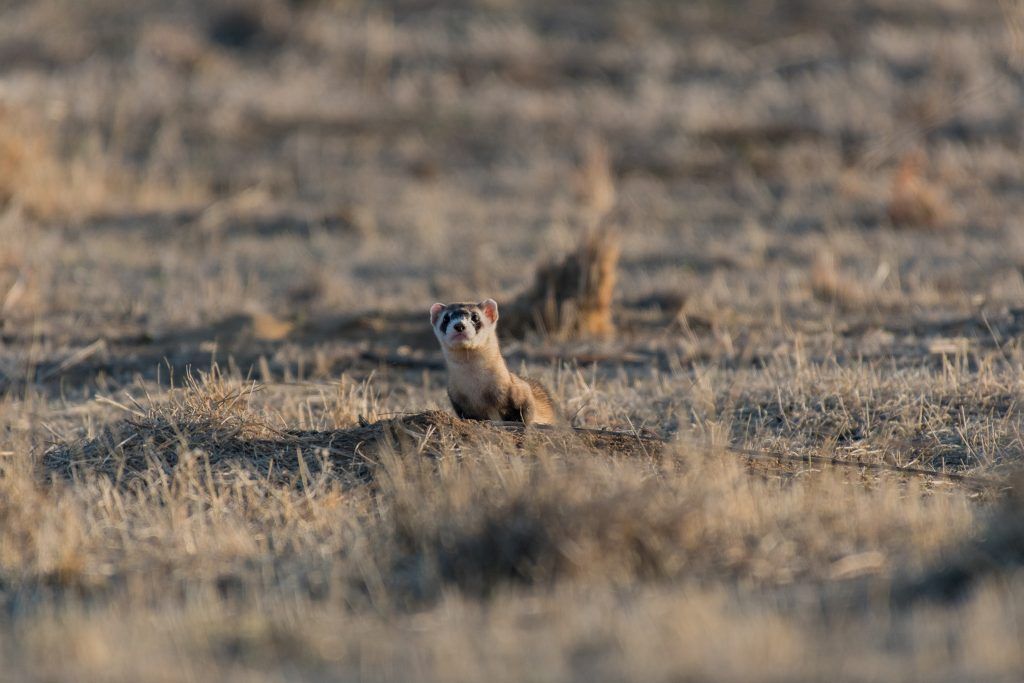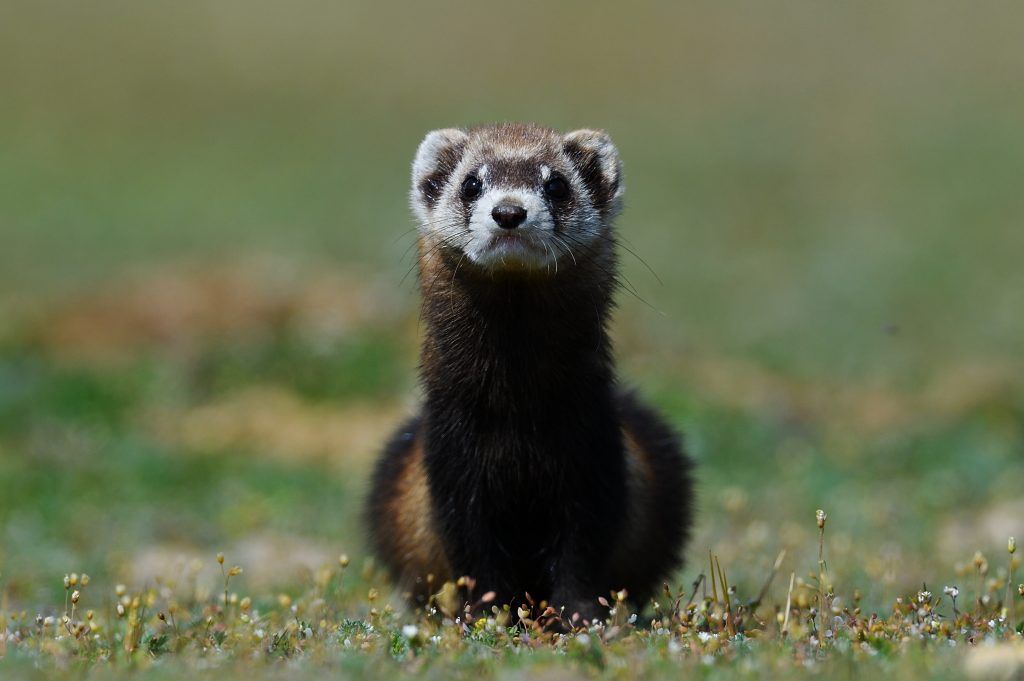Description and features of the Steppe ferret
The steppe ferret is the largest member of its species. It is widespread in Central and Western Europe, as well as in the Far East. For farmers, this animal is primarily a pest, as it ravages chicken coops and carries rabbits.

Characteristics of the steppe ferret
At the same time, Steppe ferrets control the number of rodents in the fields, thereby protecting crops. Such predatory babies lend themselves to taming if they can be caught alive. Despite the high population, some subspecies of these predators are found in the Red Book.
Appearance
The steppe ferret is distinguished by its large size in comparison with other members of the weasel family. The adult has an elongated body and short legs, due to which the predator climbs well through burrows. The body length of the steppe polecat can reach 60 cm, and the weight - up to 2 kg. Males are usually larger than females and have a fluffier tail.
The animal's coat is long, but does not differ in density. A light undercoat is visible through the guard hair, which is easy to notice even in the photo. These [predators' skins are of little value to hunters, although the wall ferret is sometimes bred on farms for the sake of a fur coat.

The appearance of the steppe ferret
The color of these animals depends on the habitat and the time of year. Sometimes, due to the molting process and natural conditions, steppe choris can radically differ in their color. However, all representatives of this species have common features. The following signs are characteristic of the fur of a predator:
- The hairline is darker at the ends and lighter towards the body.
- The undercoat is light. Common shades are beige, white, sandy, and cappuccino.
- The muzzle has a pronounced dark mask.
- The paws, tip of the tail, and belly are the darkest parts. The color can be almost black.
The presence of a bright dark mask on a white muzzle is considered a distinctive sign when describing a steppe ferret, however, among this species of animals there are also absolutely white individuals.
Usually, the cause of the appearance of White Steppe Ferrets is the absence of melanin in the body. Due to the popularity of this phenomenon, albinos are considered a separate subspecies of this predator.
Area
The original habitat of the steppe polecat (steppe horek) is considered to be Western, Eastern and Central Europe. Also, these animals can be found throughout Asia. The subspecies is widespread in countries such as:
- Austria;
- Czech Republic;
- Ukraine;
- Russia;
- Mongolia;
- China.
The predator prefers to settle in open areas, in contrast to forest species.
This animal can be found in the steppe, at the edge of the forest and in the pasture. In populated areas, the ferret is much less common and does not needlessly approach a person's dwelling.
It is noteworthy that the appearance of such a predatory animal largely depends on the habitat. For example, ferrets in Western and Eastern Europe have a darker color and a large body, while the predators of Asia may be smaller and lighter in color.

Ferret habitat
Such a large area of Steppe trorets is explained by several factors:
- Predators can adapt to any meat in the wild. Ferrets living in the north eat rabbits and birds, while the southern subspecies quietly feed on lizards and large insects.
- Predators are highly intelligent, so they often store food. This helps ferrets cope with the cold season.
- The dense undercoat allows the animals to maintain body temperature and equally well protects from heat and cold.
- Agility and flexibility of the body helps ferrets to avoid large enemies, and sharp teeth ensure victory for predators in the fight against animals such as gophers, foxes and badgers.
The greatest danger at the moment for the population of these animals is the deforestation and the development of the steppes. Even intensive hunting does not harm this breed as much as the development of new territories.
Despite the high population and wide distribution, some subspecies of these animals were on the verge of extinction. Since 1996, the Amur steppe ferret has been listed in the Red Book of Russia, and zoologists are currently breeding these predators.
Steppe ferret diet
Representatives of this species of mustelids are nocturnal animals. The Steppe ferret goes hunting at dusk, and sleeps in its burrow during the day. The structure of the body of these animals has a feature: a very short intestinal tract. Because of this, ferrets have an increased metabolism. The animals compensate for active hunting with a long sleep. In the wild, the animal can sleep up to 18 hours, and in the remaining time, hunt, bypass the territory and make supplies.
Ferrets get food in the dark with their night vision and agility. Animals easily catch rodents, chasing victims and tearing up their burrows.
The ferret is obligate predators and cannot eat anything except meat. Usually, the animal's diet is made up of the following animals:
- hamsters, mice and rats in the steppes;
- amphibians and lizards;
- birds and eggs;
- invertebrates.
Sometimes the ferret can hunt for snakes, but the predator is not resistant to poisons. At home, the steppe ferret can be given veal, boiled chicken and fresh fish. It is forbidden to feed these animals with cat or dog food, as well as soy. The ferret's stomach does not digest meat substitutes, so the predator may die.
Survival in the wild
Under natural conditions, Steppe trorets do not have many natural enemies. These include wolves, foxes and wild dogs. Also, birds of prey such as eagles, owls and hawks can hunt animals. However, these predators do not pose a serious threat to the animal population. Ferrets have good physical characteristics that allow them to escape from the clutches of the enemy. Also, small predators have special glands that emit a pungent odor. This feature of the body protects animals from enemies such as foxes, since it greatly knocks down the trail. In addition, ferrets are good for ferrets, so naturally reducing ferrets is not a problem.

Steppe ferret in the wild
The ubiquitous landfills and buildings are much more dangerous for the steppe ferret. The animal cannot adapt to such living conditions and often dies from the garbage. Curious ferrets rummage in heaps or crawl into technical pipes, after which they suffocate in them. That is why some subspecies of representatives of the weasel family were on the verge of extinction.
Breeding steppe ferret
Before embarking on the mating process, the female seeks shelter for herself. The steppe choris use the burrows of their victims or the abandoned houses of larger rodents as dwellings. Predators do not like to dig holes on their own, preferring to eat the gophers living in them, and then equip the room to their liking. Usually the passage is widened for this, but the chamber remains intact. The entrance to the ferret's burrow reaches 12 cm in diameter, while the size of 6 cm is typical for ground squirrels.
Ferrets' rutting period falls at the end of February or the beginning of March. The body of these animals is designed in such a way that the animal may die during prolonged estrus, so a non-breeding pet should be sterilized at home. Mating games of ferrets looks quite aggressive: the male bites very hard and drags the female by the withers, animals can injure each other. With a successful mating, estrus stops and the female carries the cubs for 40 days. Trorea offspring are born in May or July.
Before giving birth, the burrow is insulated with dry grass and leaves. Puppies are born blind, naked and cannot take care of themselves. Ferret females are very caring and practically do not leave the nest in the first months of the cubs' life. The puppies' eyes open by the end of the fourth week, after which the mother gradually switches to meat-based feeding. The first hunt for young animals usually occurs at the end of the third month.
The offspring is with the female until autumn, after which it usually leaves the parental burrow. Late calves can stay with their mother for the whole winter.


